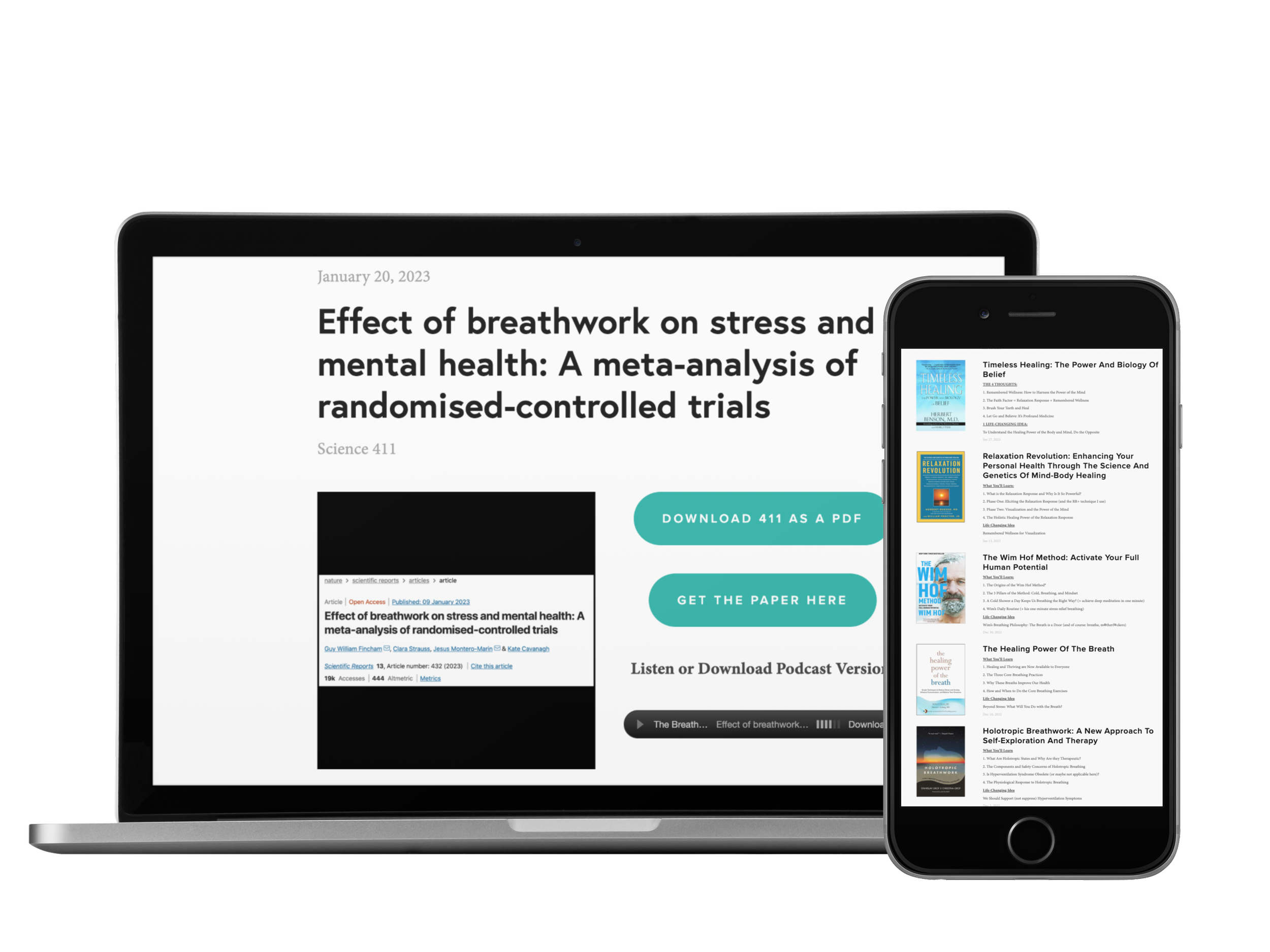Listen Instead of Reading
If you enjoy listening, you can subscribe to the audio version on Spotify, Apple Podcasts, and Audible so you don’t even have to look at the email 😊
4 THOUGHTS
1. How to Breathe for Joy
“To our knowledge, this is the first demonstration that the alteration of respiration is sufficient to induce emotion.”
This groundbreaking study (21 years ago 😊) was the first to find that breathing in specific ways can induce the corresponding emotional state. Meaning we can change our breath to change how we feel.
For example, to elicit joy, they told participants to “Breathe and exhale slowly and deeply through the nose; your breathing is very regular and your ribcage relaxed.”
Try it for ~2 minutes and see how you feel 🙏
***
P.S. If you want to learn more about breathing & emotions, sign up for my upcoming 4-week course, Breathing for Better Mental & Emotional Health: Click Here to Learn More
2. Finding Answers to Life’s Most Pressing Questions
“An athlete gets herself into trouble when, instead of listening to her body and its intuitions, she begins to worry about what her competitors are doing and tries to “outwork” them. The answers to the most pressing questions that athletes face in their day-to-day quest for improvement (“Should I push? Should I back off?”) lie within them.”
– Matt Fitzgerald, How Bad Do You Want It?
I believe this idea applies to all of life, not just athletics: Nine times out of ten, the answers to the most pressing questions we face in our quest for continuous improvement lie within us.
3. How to Deal with Life’s Storms (according to Thich Nhat Hanh)
“When a storm comes up in you, get out of the treetop and go down to the trunk for safety. Your roots start down at your abdomen, slightly below the navel…Put all your attention on that part of your belly, and breathe deeply. Don’t think about anything, and you’ll be safe while the storm of emotions is blowing. Practice this every day for just five minutes, and after three weeks, you’ll be able to handle your emotions successfully whenever they rise up.”
- Thich Nhat Hanh, Peace is Every Breath
I love this analogy. The next time we’re dealing with an emotional storm, we’ll be wise to remember to “get out of the treetop and go down to the trunk for safety.” 👏👏👏
4. Your Breathing Style Determines Your Stability in All of Life
“The larger point is that someone’s breathing style gives us insight into their broader stability strategy, the set of patterns that they have evolved over the years to help them get by in the physical world. All of us have these strategies and 95% of the time…they work fine. But once you add different stressors…those strategies, those instinctive physical reactions, can create problems. And if our respiration is also taxed, those other problems will be magnified.”*
– Peter Attia, MD, Outlive
Although Dr. Attia is discussing the role of breathing for physical stability, isn’t it amazing that this idea is equally applicable to mental, emotional, and spiritual steadiness too?
Our breathing style determines our stability in all of life.
1 Quote
“By consciously slowing down the breath and making it rhythmic so that consciousness is not disturbed by it, we can achieve corresponding tranquility.””
P.S. I found that great quote here.
1 Answer
Category: Breathing & Emotions
Answer: Nasal breathing stimulates this part of the brain, which communicates with emotional areas like the amygdala and hippocampus.
…
(Cue the Jeopardy! music.)
…
Question: What is the olfactory bulb?
In good breath,
Nick Heath, T1D, PhD
“Breathing is the compound interest of health & wellness.”
P.S. here’s my go to lazy meal
Get iCalm 20% Off
Try out the iCalm Relaxation Shot. It’s a perfect modern complement to our contemplative practices 🙏
Use the code NICK20 to get 20% off.
* An asterisk by a quote indicates that I listened to this book on Audible. Therefore, the quotation might not be correct, but is my best attempt at reproducing the punctuation based on the narrator’s pace, tone, and pauses.




